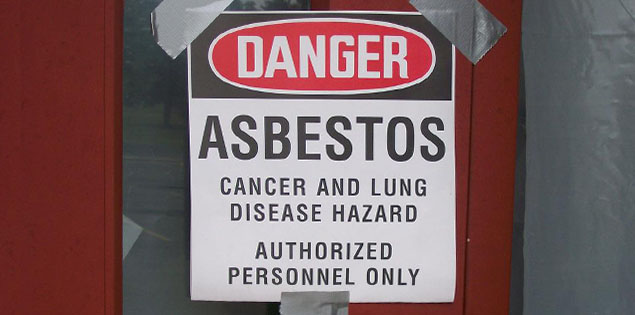Asbestos Management Program

Asbestos is the name given to a group of naturally occurring minerals that are resistant to heat and corrosion. Asbestos has been used in products, such as insulation for pipes (steam lines for example), floor tiles, building materials, and in vehicle brakes and clutches. Asbestos includes the mineral fibers chrysotile, amosite, crocidolite, tremolite, anthophyllite, actinolite and any of these materials that have been chemically treated or altered. Heavy exposures tend to occur in the construction industry particularly during the removal of asbestos materials due to renovation, repairs, or demolition.
Asbestos is well recognized as a health hazard and its use is now highly regulated by both OSHA and EPA. Asbestos fibers associated with these health risks are too small to be seen with the naked eye. Breathing asbestos fibers can cause a buildup of scar-like tissue in the lungs called asbestosis and result in loss of lung function that often progresses to disability and death. Asbestos also causes cancer of the lung and other diseases such as mesothelioma of the pleura which is a fatal malignant tumor of the membrane lining the cavity of the lung or stomach. Epidemiologic evidence has increasingly shown that all asbestos fiber types, including the most commonly used form of asbestos, chrysotile, causes mesothelioma in humans.
EHSRM Oversight
EHSRM is charged with oversight of the Asbestos Management Program . The Asbestos Program is designed to protect the campus community from potential asbestos hazards and to ensure that asbestos-containing materials (ACM'S) are maintained, removed, and handled in compliance with state and local asbestos regulations. We work closely with facilities to ensure the campus community is protected from any potential exposure to asbestos particulates. The comprehensive program consists of
- Evaluating all buildings for Asbestos Contain Materials (ACM)
- Reviewing all campus construction, remodels, demolition, renovation and facility modification projects that may potentially impact hazardous building materials.
- Making recommendations to ensure identified asbestos material is abated and managed safely.
EHSRM approval
All projects involving the potential disturbance of asbestos must be approved by EHSRM prior to the initiation of the project. This is important from both a health and safety as well as expense standpoint. In some cases the expense associated with the abatement of the asbestos can be cost prohibitive.
Training
As part of the program, annual training is provided to all employees that have the potential to impact asbestos during the course of their routine work duties. This is generally those person who are in facilities including, but not limited to, the carpenters, plumbers, hvac, and maintenance crews. The next scheduled training class can be found at the following location:
Contact the EHSRM if you have concerns.
It is rare that ACM is in the workplace, unless it is disturbed in any manner. However, if you have any concerns regarding your workplace, please call the EHSRM Occupational Health and Safety program at (956) 665-3690.
